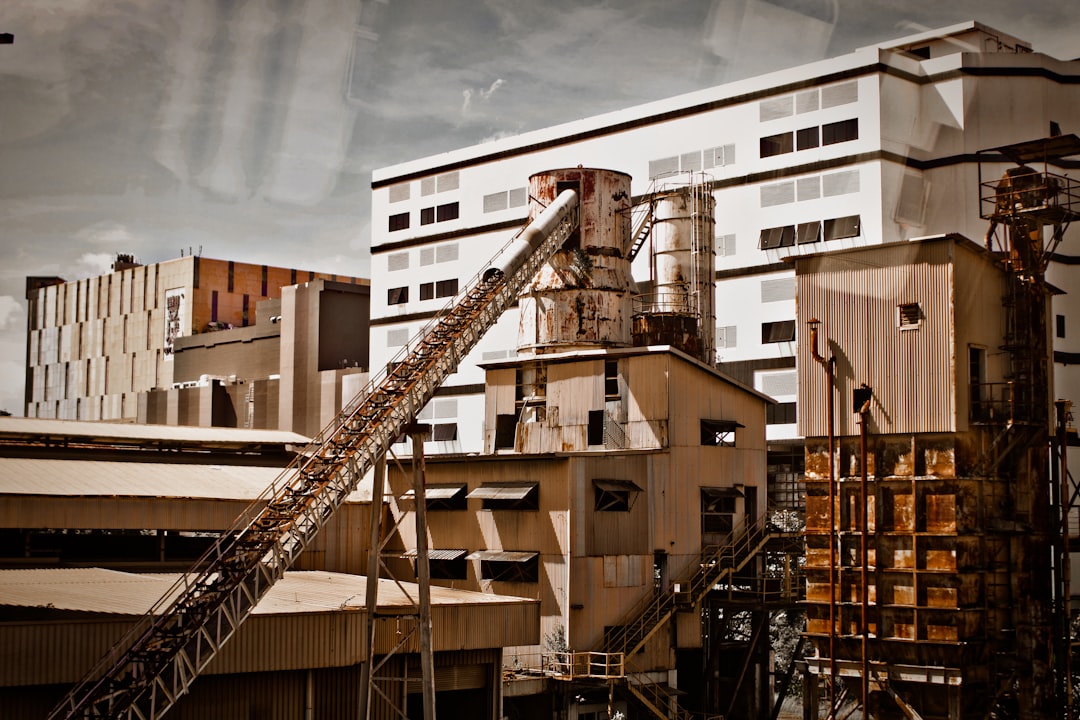The steel industry, a cornerstone of global infrastructure and manufacturing, faces unique challenges in managing its complex supply chains. From the extraction of raw materials to the delivery of finished products, a robust and efficient supply chain is crucial for profitability, sustainability, and competitiveness. This post delves into the intricacies of steel supply chain management, exploring key aspects and emerging trends.
Sourcing Raw Materials: The Foundation of Steel Production
The journey of steel begins with the sourcing of raw materials, primarily iron ore, coal, and limestone. These materials are often sourced from geographically dispersed locations, requiring intricate logistics and careful planning. The quality and consistency of these raw materials directly impact the final product’s quality and production costs. Supply chain managers must navigate fluctuating market prices, geopolitical risks, and environmental regulations to ensure a reliable and cost-effective supply. This involves establishing strong relationships with suppliers, negotiating favorable contracts, and implementing robust risk management strategies to mitigate potential disruptions, such as those caused by natural disasters or political instability. Furthermore, the increasing focus on sustainable sourcing, including responsible mining practices and reduced carbon emissions, adds another layer of complexity to this stage of the supply chain.
Optimizing Steel Production Processes: Efficiency and Quality Control
Once raw materials are secured, the next critical stage involves optimizing steel production processes. This encompasses a range of activities, from ironmaking (using blast furnaces or direct reduction processes) to steelmaking (using basic oxygen furnaces or electric arc furnaces) and finally, to downstream processing like rolling, casting, and finishing. Efficiency in these processes is paramount, as it directly impacts production costs and overall profitability. Modern steel mills employ advanced technologies like automation, robotics, and data analytics to enhance efficiency, improve product quality, and reduce waste. Effective supply chain management in this stage necessitates close coordination between various departments within the steel mill, ensuring a smooth flow of materials and information. Real-time monitoring of production parameters and proactive maintenance of equipment are crucial for minimizing downtime and maximizing output.
Logistics and Transportation: Delivering Steel to Market
The efficient movement of steel products from the mill to the end customer is a critical element of supply chain management. Steel is a heavy and bulky material, requiring specialized transportation methods like rail, sea, and road freight. Effective logistics planning involves optimizing transportation routes, choosing the most suitable mode of transport, and managing inventory effectively to minimize storage costs and lead times. Supply chain managers must carefully consider factors like transportation costs, delivery times, and the risk of damage or loss during transit. The use of advanced technologies such as GPS tracking, real-time shipment monitoring, and sophisticated route optimization software can significantly improve logistics efficiency and enhance visibility across the supply chain. Furthermore, the growing trend towards sustainable transportation, including the use of electric vehicles and alternative fuels, is shaping the future of steel logistics.
Inventory Management: Balancing Supply and Demand
Effective inventory management is crucial for minimizing costs and ensuring timely delivery of steel products. Maintaining optimal inventory levels requires a balance between meeting customer demand and avoiding excessive storage costs. This involves accurate demand forecasting, effective inventory control systems, and robust warehouse management practices. Advanced inventory management techniques, such as just-in-time (JIT) inventory systems and vendor-managed inventory (VMI), can help optimize inventory levels and reduce waste. Supply chain managers must also consider the impact of seasonality, economic fluctuations, and unexpected events on inventory levels, implementing contingency plans to mitigate potential disruptions. Data analytics and predictive modeling can play a significant role in improving forecasting accuracy and enhancing the effectiveness of inventory management strategies.
Emerging Technologies and the Future of Steel Supply Chain Management
The steel industry is increasingly leveraging emerging technologies to enhance its supply chain management capabilities. These technologies include the Internet of Things (IoT), artificial intelligence (AI), blockchain, and big data analytics. IoT sensors embedded in equipment and materials provide real-time data on production processes, enabling proactive maintenance and improved efficiency. AI-powered predictive analytics can help forecast demand, optimize logistics, and improve inventory management. Blockchain technology can enhance transparency and traceability across the supply chain, ensuring the authenticity and sustainability of materials. Big data analytics allows for the identification of patterns and trends, enabling data-driven decision-making and improved supply chain optimization. The integration of these technologies is transforming the steel industry, paving the way for more efficient, resilient, and sustainable supply chains.
In conclusion, effective supply chain management is paramount for success in the steel industry. By optimizing sourcing, production, logistics, and inventory management, and by embracing emerging technologies, steel companies can enhance their competitiveness, improve profitability, and contribute to a more sustainable future.
SEO Tags:
- Steel Supply Chain Management
- Steel Industry Logistics
- Steel Production Optimization
- Raw Material Sourcing Steel
- Sustainable Steel Supply Chain




